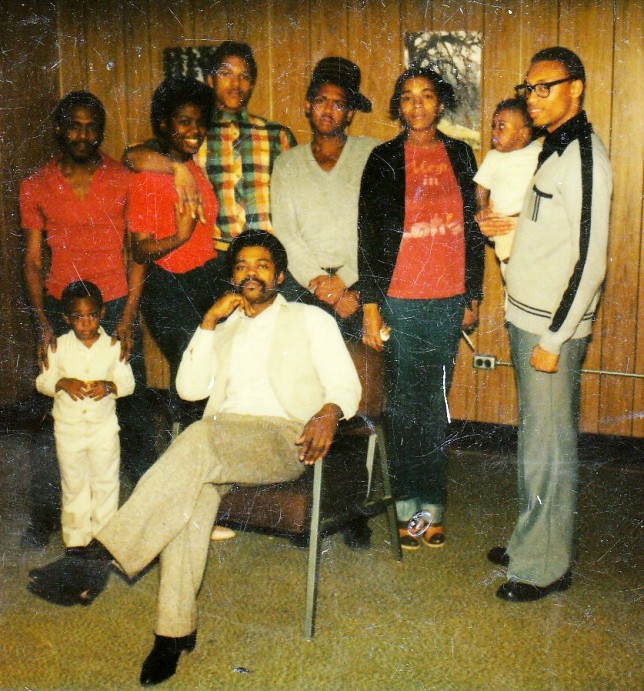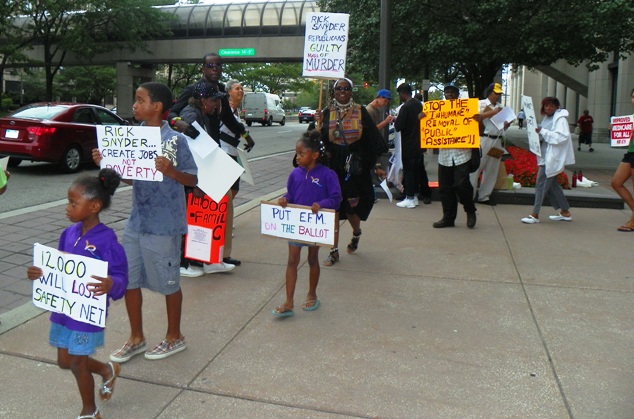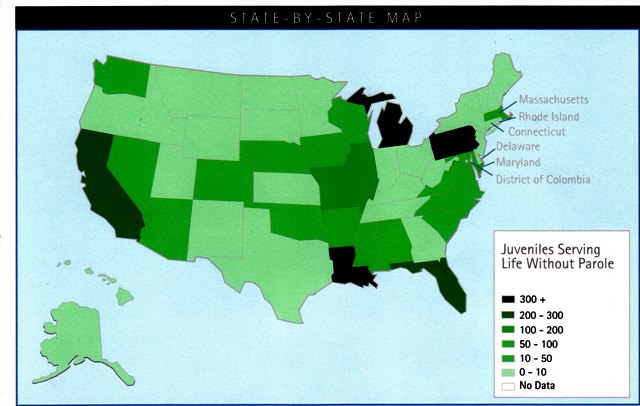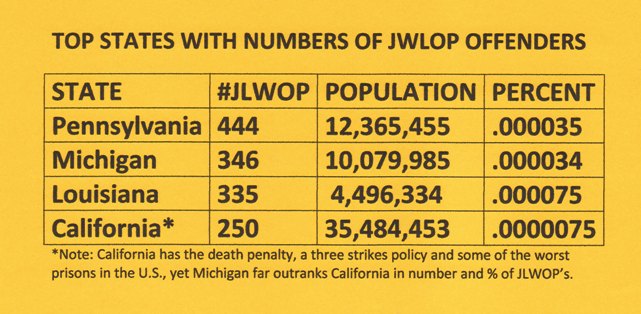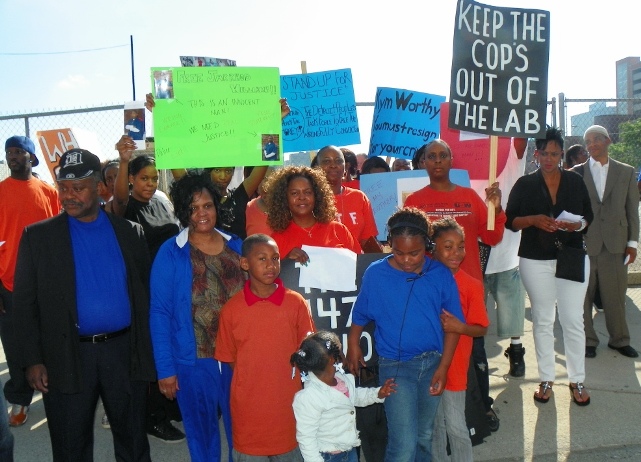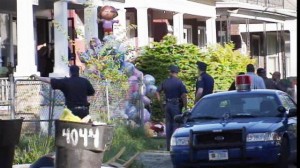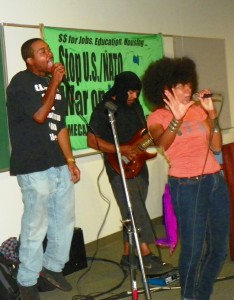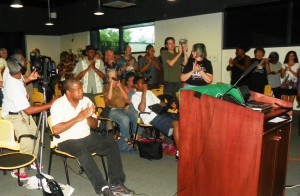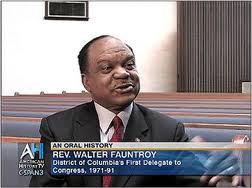Friends of Voice of Detroit:
Edward Sanders (featured in the article above) is a long-time friend of mine whose story I have covered often in the pages of the Michigan Citizen and in the Voice of Detroit (see articles citing Edward’s case at http://voiceofdetroit.net/2011/03/06/voice-of-juvenile-defendants/ and http://voiceofdetroit.net/2011/06/15/dpd-msp-and-worthy-guilty-in-crime-lab-cases-says-peoples-task-force/), as part of the campaign to abolish juvenile life without parole in Michigan and the U.S., one of only two countries in the world that allows this barbaric practice.
VOD is asking that you sign a petition (at end of article) on his behalf, requesting his transfer from Kinross Corretional Facility in the upper peninsula of Michigan, for his safety. Over 75 people have already signed, and we are shooting for at least 100 before sending it to Warden Thomas Mackie.
His life was nearly taken by another prisoner on July 11, 2011, a prisoner who never should have been placed in Edward’s Level 2 facility at Kinross. The attacker has been transferred to Marquette, a Level 5 facility, but Edward is still not safe.
It is unclear why his attacker was placed at Kinross in the first place. Previous to this attack, Kinross denied Edward mail from the Voice of Detroit consisting of printouts of VOD articles (since this newspaper is only published on-line). Some of those articles cited Edward’s unjust imprisonment and advocacy for others like him.
In an Aug. 25 letter to Thomas Mackie, Deputy Warden at Kinross, Edward wrote:
“While in my assigned room in E-Unit (ECF), on July 11, 2011, shortly after 9:15 p.m. count rounds were made by unit staff, I was viciously attacked by one of my roommates. Inmate Dudley, my attacker, is huge, weighing at least 340 lbs. I weigh 164 lbs. During the attack, Dudley stabbed or sliced me repeatedly with a sharp object and beat me about the head and face—as I lay pinned under him on the floor at his feet. Unable to get past Dudley to leave the room for safety and with no immediate sign of staff help coming, I was forced to escape my attacker by jumping out of my first floor unit window. Thereafter, I immediately re-entered E-Unit, reported to staff that I needed medical assistance. My wounds required 34 stitches to close. Plus, there are other permanent disfigurements on my face, nose and emotions.
I hereby request compensation where:
- Under the circumstances, KCF staff failed to exercise the degree of attention, knowledge and judgment required for my protection from a predator and/or extremely violent inmate.
- Inmate Dudley is a known violent sexual predator. He has a prior conviction for CSC. Plus, in C-Unit, he attacked a young inmate (5’5” and 135 lbs.). He has received numerous tickets at this facility for DDO’s, drugs, and fighting—amongst other major misconducts.
- Inmate Dudley has been in and out of administrative segregation at least four times in the past year, and had numerous violent altercations with other roommates. I was subjected to that violent nightmare—attacked with a dangerous weapon and beaten.
MDOC Policy Directive, 03.03.130 states, “Facility staff shall identify prisoners who are assaultive or predatory. Such prisoners shall be placed at the level of security necessary to control such behavior. A prisoner shall be placed in a single occupancy cell when necessary to ensure the safety of the prisoner or others.
KCF staff’s failure to properly classify inmate Dudley to his correct security level—due to his particularly violent and clearly documented recent behavior—deprived me of my basic human need of reasonable safety. Compounded by facility’s reliance on multiple-bedding in housing unit practices, KCF staff demonstrated deliberate indifference to my safety and health when they knew or should have known they were placing me in an unsafe living condition by housing me with a dangerous prisoner known to be aggressive and violent.
In conclusion, I respectfully submit below my compensation request. Please compensate me fully for my physical and emotional injuries, where the abovementioned facts are a violation of my Eighth Amendment right against cruel and unusual punishment. The brutal attack I survived was both horribly cruel and easily preventable.”
Sanders goes on to ask for compensation for his TV, which his attacker destroyed, rescission of the misconduct charge HE received although the attack was unprovoked (he has never received a misconduct charge at Kinross and has a virtually spotless record otherwise), and monetary damages. He has filed a grievance and a request for a re-hearing on the misconduct charge. As part of the process to support him, I am obtaining copies of his and Dudley’s central office files through the Freedom of Information Act.
Edward is also asking for an immediate transfer to a Wayne County region prison, with a stipulation for a two-man room or cell housing.
The Voice of Detroit fully supports Edward in this matter.
Please take a minute to sign the petition below, created through SignOn.org, to help get Edward transferred for his safety, while we continue the battle for his ultimate release and that of hundreds of others like him. Thank you so much, in the struggle, Diane Bukowski, editor, Voice of Detroit
Subject: Justice for Edward Sanders (please forward widely)
Hi,
Edward Sanders #141545 has been incarcerated in Michigan’s state prisons since 1975, when he was 17, sentenced to life without parole. (He was not the shooter in his case.) He has a bachelor’s degree, legal skills and assists others spiritually. His prison record is virtually unblemished. In July, 2011, he was nearly killed at Kinross prison by another prisoner known for his history of repeated violent assaults on prisoners he is housed with. It is time for Michigan to grant clemency to Edward; meanwhile he must be transferred back to Wayne County with a stipulation for a 2 man room or cell housing.
So I created a petition to Thomas Mackie, Deputy Warden, Kinross Correctional Facility and Governor Rick Snyder, which says:
“Immediately transfer Edward Sanders, MDOC #141545, from Kinross Correctional Facility to a Wayne County, Michigan prison in partial compensation for the unprovoked brutal attack which nearly took his life July 11, 2011, due to the negligence of prison authorities.”
Will you sign this petition? Click here:
http://signon.org/sign/justice-for-edward-sanders?source=c.em.cp&r_by=527375
Thanks!
Questions may be directed to myself, Diane Bukowski, at 313-825-6126 or email diane_bukowski@hotmail.com.



